The World’s Most Stable Climate
by Luis Teixeira da SilvaThe World’s Most Stable Climate
World Weather Online states that the “Algarve enjoys one of the most stable climates in the world” with its moderate weather influenced by both the Atlantic and Mediterranean seas and its proximity to North Africa. Portugal has 3,300 hours of sunshine per year, one of the highest in Europe. The Algarve has a temperate climate and although bathed by the Atlantic, exhibits Mediterranean characteristics. Below are statistics for the province of the Algarve. Silves temperatures tend to be higher than the average for the region, given its microclimate which is much appreciated by many foreign visitors and residents.
Safety First
Portugal ranks as the 17th safest country in the world, of a list of 153. Violent crime is very rare and petty crime is limited mostly to opportunistic incidents during the busy tourist season.
The OSAC report, produced by the US Bureau of Diplomatic Security, confirms that Portugal has no indigenous terrorist groups. Organized crime is not a major issue with the exception of isolated Eastern European or other immigrant groups. Foreigners, however, are well integrated into Portugal’s multi-ethic society and while the country remains predominantly Catholic, it is very tolerant of religious, ethnic, and cultural diversity.
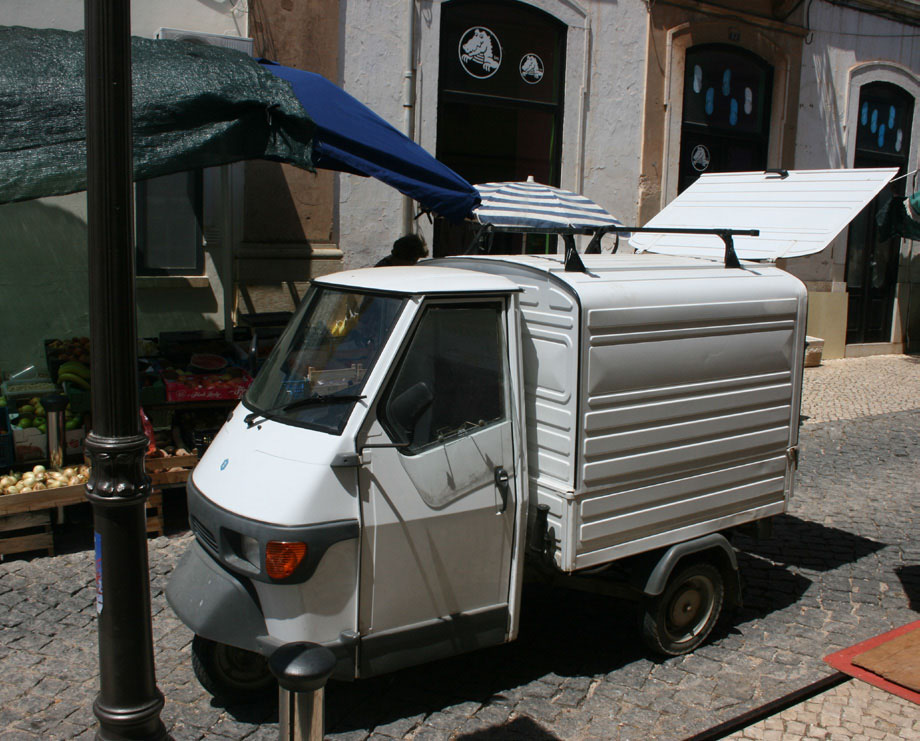
Highways in Portugal are an excellent quality and the A22 highway is no exception. Portuguese drivers, although at times prone to speeding and impatience (in common with many southern Europeans) are nonetheless quite peaceful. Incidences of road rage are uncommon. It is more likely that visitors will become frustrated by an encounter with a 50 cc car (called mata velhos or ‘killers of old people’ because the cars, little more than a shell atop a motorbike engine, don’t have the safety features of modern vehicles) or with the occasional gypsy horse-drawn cart.
Lagoa, located on the busy EN125 road which also crosses the Algarve, is not considered an accident hot spot on what is otherwise one of the country’s busiest regional roads. The city of Silves, situated further inland, is a driver’s haven, with calm roads, respectful drivers, and no traffic jams.
112 is the national free number to call for most types of emergencies (from a fixed line or cellphone).
Beautiful Beaches
Where to begin!? Silves’ two beaches, Armação de Pera and Praia Grande, have blue flags awarded by the European Blue Flag association. Among Lagoa’s 17 spectacular beaches, some require bathers to descend large flights of stairs into wondrous cliff-enclosed coves bathed by azure waters. Others allow you to pull up and stroll out onto the light-colored sand. Most beaches have lifeguards during the summer season. Many have restaurants or snack bars, some of which stay open all year round.
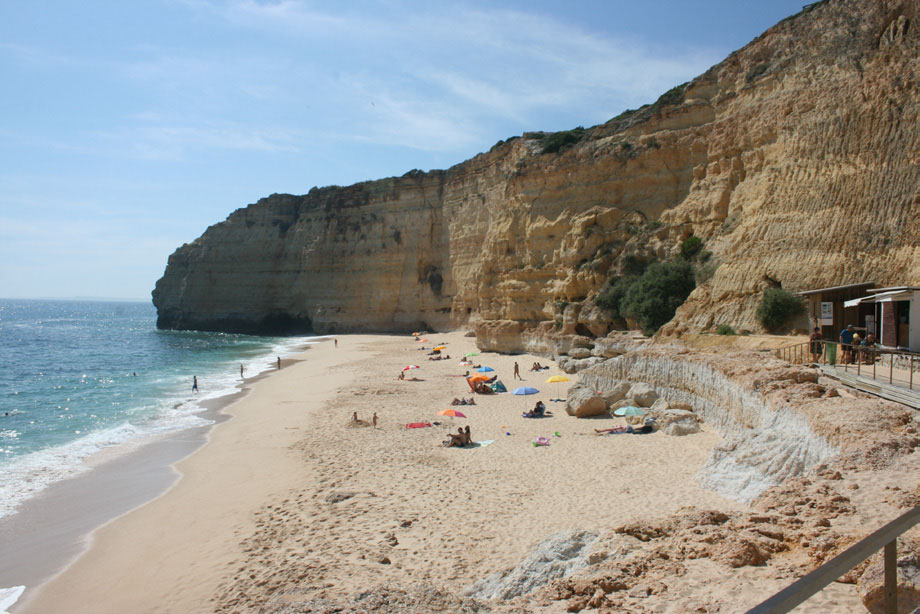
World Renowned Golf
The Algarve has an enviable reputation as far as golf is concerned. With Portugal voted Europe’s ‘Best golf destination in Europe in 2014’ by the World Travel Awards, and the Algarve the gem of the Portuguese collection, it is no wonder that hundreds of thousands of visitors are attracted every year to the more than 40 golf courses dotted along a stretch of little more than 75 miles.
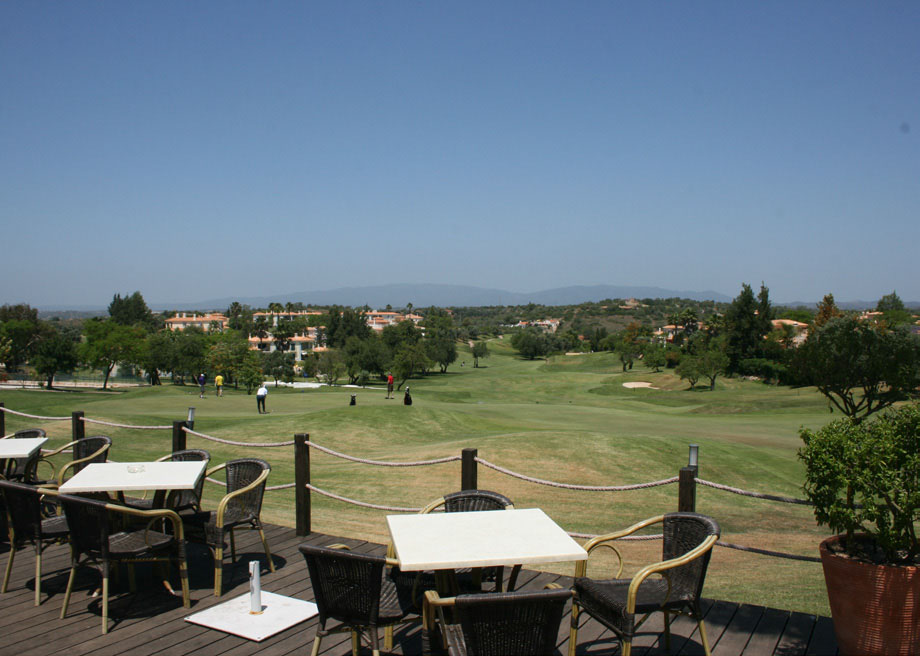
The Lagoa and Silves golfing landscape is dominated by the Pestana Group, Portugal’s top hotel group. The Pinta
and Gramacho golf courses in Lagoa and the Silves Golf course allow players of all abilities to test their skills against a backdrop of some of the region’s indigenous species of flora such as ancient carob and olive trees, combined with natural stone walls and artistic use of water features. With designs by famous US golf architect Ronald Fream, and South Africa’s Nick Price, a round of golf here is an experience. The 5-star Amendoeira golf resort—with 36 championship holes designed by Nick Faldo and Christy O’Connor Jr—is one of the seven golf courses operated by Portugal’s largest golf operator, Oceanico. For families or those who want to hone their pitching and putting skills, there is the 9-hole Vale do Milho course, with views to the Atlantic.
There are a number of specialist tour operators that not only book group golfing holidays but also arrange preferential tee times, discounts, and the all-important 19th hole arrangements!
The Tortoise and the Hare – From Lisbon to the Algarve
by Luis Teixeira da SilvaThe Tortoise and the Hare:
Rambling or racing from Lisbon to the Algarve
Portugal has just been voted the winner in the best European destination for American tourists, as voted by readers of 10Best Readers’ Choice and USA Today: www.10best.com/awards/travel/best-european-country. As the country’s capital, many intercontinental flights stop over in the Portuguese capital. While this may be an inconvenience for some, it presents a wonderful opportunity to experience the city (one of Europe’s most popular weekend getaways) and also to choose the way in which to connect to the visitor paradise of Portugal, the Algarve, located at the southernmost tip of the country, so here we let you know the top priorities from Lisbon to Algarve.
Portugal is one of the world’s 20 most visited countries, with over 13 million people visiting the country every year. After a long-haul or transatlantic flight, a few days in Lisbon are an opportunity to overcome jet lag and to adjust to the different weather and gastronomy, in the city voted by Food and Wine magazine as one of the world’s most romantic.
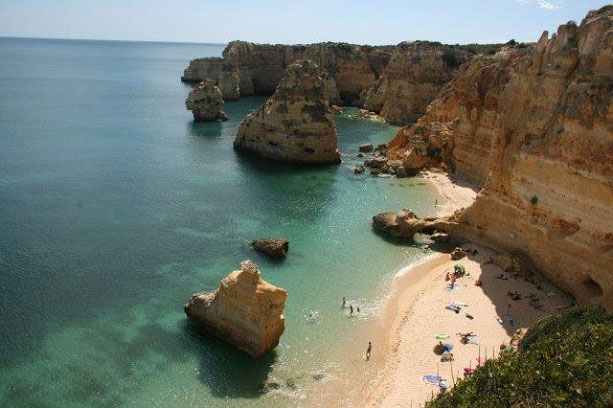
Being based in Lisbon is convenient in that most tours start in the capital. When on a short stay, highly recommended is a visit to Cascais with its beautiful cobbled streets and the amazing sweeping views over the bay and the Tagus estuary, and a wander through the medieval city of Sintra. The city’s Pena Palace was voted the continent’s most attractive castle by European Best Destinations, beating Neuschwanstein and Segovia’s Alcazar to the post. Only 30 kilometres (less than 20 miles) west of Lisbon, venture out by catching the train at the Cais do Sodré station near the Tagus River, which passes underneath the impressive 25th April bridge linking the popular Docas area to the Christ the Redeemer statue on the southern banks of the river. You will also pass the Torre de Belém and the Monument to the Discoveries, testament to the golden years of Portuguese maritime exploration. In the same vicinity, the Jerónimos monastery is a wonderful example of Manueline architecture (named after the King who ordered it built). Further along, pass Estoril, in the earlier part of the 20th century the place where the European wealthy congregated. The imposing casino, the country’s largest, is easily spotted from the train. Then hop on a bus or do a tour of Sintra, and make sure to try some of the sumptuous pastry!
Back in Lisbon, the options are almost endless. Stroll down Rua Augusta which Condé Nast Traveler has voted the street one would most wish to visit before dying! Climb up to St. George’s Castle and gaze out over Lisbon’s seven hills. Explore the Chiado with its fado singers and traditional dishes. Visit the modern redevelopment of the Expo area, with its modern architecture, cable car ride, scenic tower, views over the Vasco da Gama Bridge and Europe’s largest aquarium.
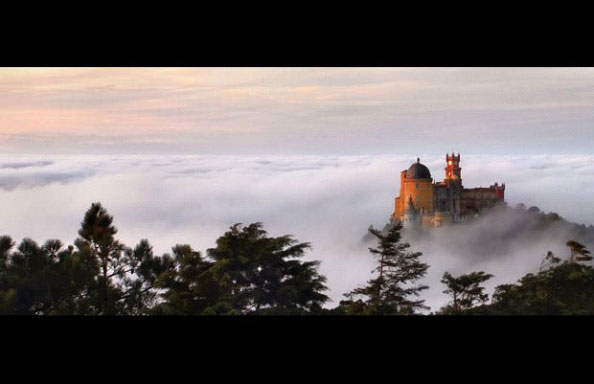
Ucityguides has ranked Portugal the 6th most beautiful country in the world, in a list topped by Italy, Spain and France, and which includes perennial favourites Brazil, South Africa and the USA. From Lisbon to Algarve, your final destination, beckoning, will you now be anxious to race to the California of Europe or tease your senses by meandering slowly through the Alentejo province?
If you choose the former, there is no better way to experience Portugal’s world-class infrastructure than to cross the Vasco da Gama Bridge and head straight down the A2 highway for an approximately two-and-a-half hour journey to the Algarve. Once there, the A22 highway will take you east to Vilamoura, Faro, Tavira and Spain and west to Lagoa/Carvoeiro, Portimão, Lagos and Sagres, including crossing the fabulous bridge over the Arade River.
If your choice is to take your time down to your final destination, then cross the 25 de Abril bridge, pass Christ the Redeemer and continue south on the A2 until the exit at Alcácer do Sal. Take the national road which gives you a bird’s eye-view of the Sado River and one of the largest rice plantations in the country. Make the most to stop off for a bite to eat at one of the simple road-side restaurants serving typical Alentejo dishes.
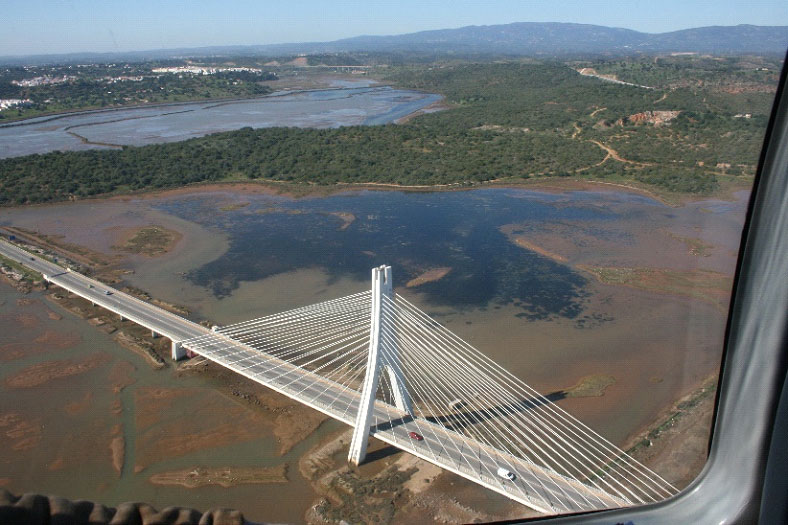
After probably having overindulged on generous portions, make your way to the coastal road and be prepared to spend a few hours on a meandering road, but well worth the effort to turn off to visit Porto Covo, Vila Nova de Milfontes, Zambujeira do Mar and Aljezur. Before heading down towards Lagos and the western Algarve, make one more stop – take the circular route via the beaches at Bordeira and Carrapateira.
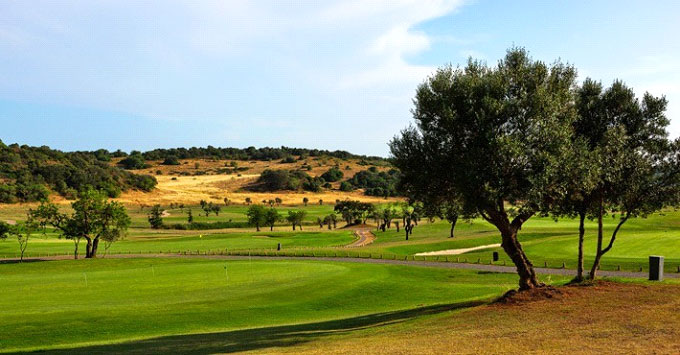
Nothing drives home the reason why the World Travel Awards have anointed the Algarve as Europe’s leading beach destination than looking out at miles of pristine beach, sand dunes and river, knowing that some miles further south, lies the first of the 40 golf courses which contributed to the World Golf awards voting Portugal as the World and Europe’s leading Golf Destination for 2014. Just a small part of the reason why the Algarve is the Best Place in the World to Retire.
Viva Culture! A Variety of Things To Do
by Luis Teixeira da SilvaViva Culture!
Empty streets, closed cafés and restaurants, hotels which give their staff a long winter off, and even beach bars which are disassembled, only to miraculously reappear in the spring, are well-recognised signs of life in a summer tourist destination. Walkers are in their element as they have trails to themselves. Cyclists find that the only traffic are the few locals who also venture off the beaten path. Beachcombers have a choice of endless stretches of golden sand. But, while wonderful for the visitor who likes the quiet at this time of the year, for most winter tourists the daunting challenge is to find a variety of things to do – viva culture.
With an increasing number of people considering spending time away during the colder and rainier winter months in their home countries, one of the most important questions on their minds is whether they will simply find enough to do, to keep them occupied while in a winter sun destination.
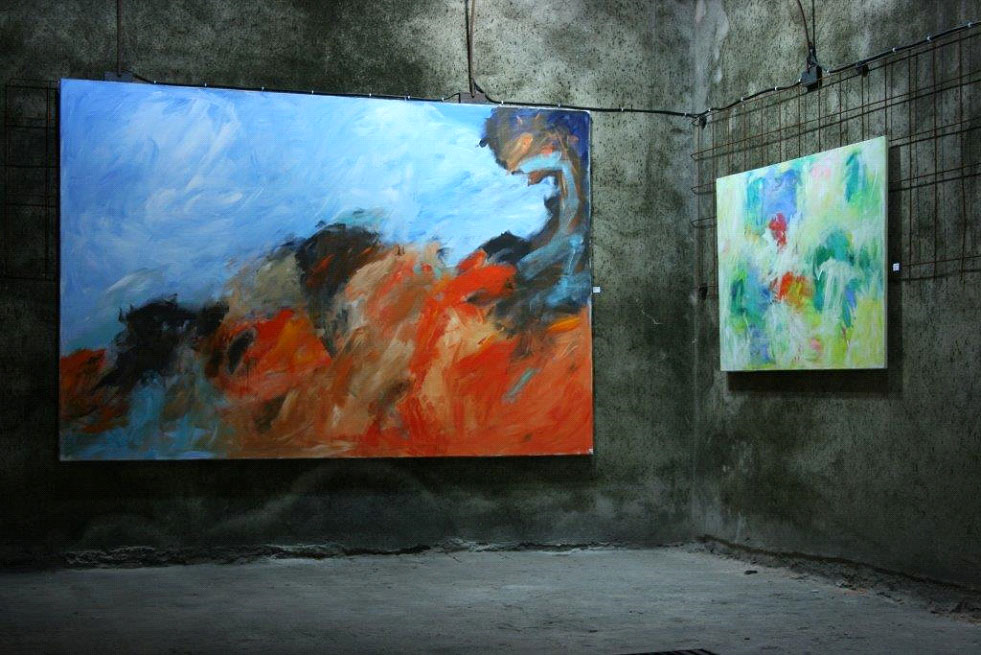
Notwithstanding that in the home country retirees naturally reduce their activities over the winter, for reasons of accessibility and climate, and that even in the summer, their participation is often limited due to distances and traffic, these factors are often ignored when abroad.
Any analysis of the profile of any region should take into account three very important factors:
⦁ availability: the variety of activities during the winter;
⦁ accessibility: the ease of access to the activities, both in terms of distance and physical access; and
⦁ affordability: whether someone on a limited budget (such as a pension) will be able to participate in multiple activities
This winter in the Algarve has been very busy. October set the scene with the World premier week of the Holman and Ash musical, Blind Faith. Audiences were treated to the talented duo’s music and lyrics in preparation for the planned Cathedral tour of the UK in 2015. November saw a new exhibition at the country’s largest private art gallery, located in Lagoa, with visitors afterwards opting for a wine-tasting of regional vintages, or participating in an art auction. During the month, guests took their pick from several music performances by the region’s orchestras, and some attended the hilarious production of Donizetti’s comedic opera Rita, ou le Mari Battu, at the Municipal theatre in Portimão for €15 a head.
Early December, after an unusually long late November rainy spell, saw the return of bright, sunny days. A beautiful (and free) performance by the woodwind orchestra of the Algarve, with participants aged 8 to 60, was followed by the Russian ballet which graced the region with its superb performance of Tchaikovsky’s classic Swan Lake, at €25 per ticket. Perhaps a larger stage would have done greater justice to the grace of the international dancers but being a winter performance, the organisers opted for a 300-seater, fully accessible auditorium. Some visitors looking for an authentic insight into the region, took the leisurely €20 round-trip boat trips to Silves, the Algarve’s original capital, with its mix of Moorish and Roman influences, departing from the river mouth of the Arade River. Time for a leisurely stroll along the river in the town, as well as through some parts of the city, before taking in a 3-course meal at a local restaurant (drink included) for €7.50 a head!
Roll in January and New Year’s resolutions. For some visitors these included visiting the converted sardine factory in downtown Portimão, now a modern museum (€3 at the door), or the new wax museum in Lagos, paying tribute to the discoveries, at €4. A stunning evening jazz performance by the region’s jazz orchestra, at €6, was complemented by young talent entertaining for free in several locations around Lagoa, making an event out of a visit to the post office or to the library.
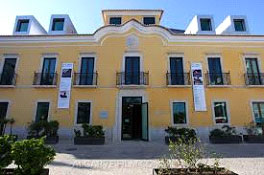
The Al Mouraria group, combining traditional Portuguese fado with the rhythm of the Argentinean tango, entertained guests for €9 at an evening performance in town, and some visitors are already looking ahead to stellar performances of the Hunan acrobatic circus, in Lisbon and Portimão. With so much cultural variety, it was surprising that almost 80 local and visiting golfers found the time to participate in the year’s first amateur competitive golf event on the busy golfing, but the €75 cost per couple, including a buggy, might have just been a factor! The sport had in November been the main attraction at the Portuguese disabled golf championship. For others, the beautiful coastal walks (no cost and majestic views) were just the tonic to an eventful winter in the Algarve.
Just as the Algarve is Europe’s most famous secret, so too the variety of activities, many of them cultural, is proving to be an irresistible allure… Winter visitors abroad are encouraged to speak to insiders to get insights into the wealth of activities on offer. For any visitor to Southern Europe, it’s not only about who you know, but whether they can tell you what is happening and where! I suppose we could say – Viva Culture!
Art in Algarve Emulates Multicultural Community
by Luis Teixeira da SilvaArt in Algarve Emulates Multicultural Community
It’s not quite Miami, or the melting pot that is São Paulo, or Paris with its quartiers, or even London with its myriad Tube stops, many of which represent gateways to miniature international communities. But art in Algarve has its own ‘identity’ influenced by the vast range of nationalities represented in such a small area: Portuguese, German, British, Dutch, American, Canadian, Norwegian, Swedish…the list goes on.
In a regulated world, one where individuality is a treasured human trait and where public expressions of personal taste are increasingly uncommon, art continues to stand out as a medium for expression that crosses the cultural divide. Few places are more symbolic of the Algarve’s thriving multinational community than Arte Algarve, the unique space nurtured into the country’s largest privately-owned gallery by its founder Rolf Osang.
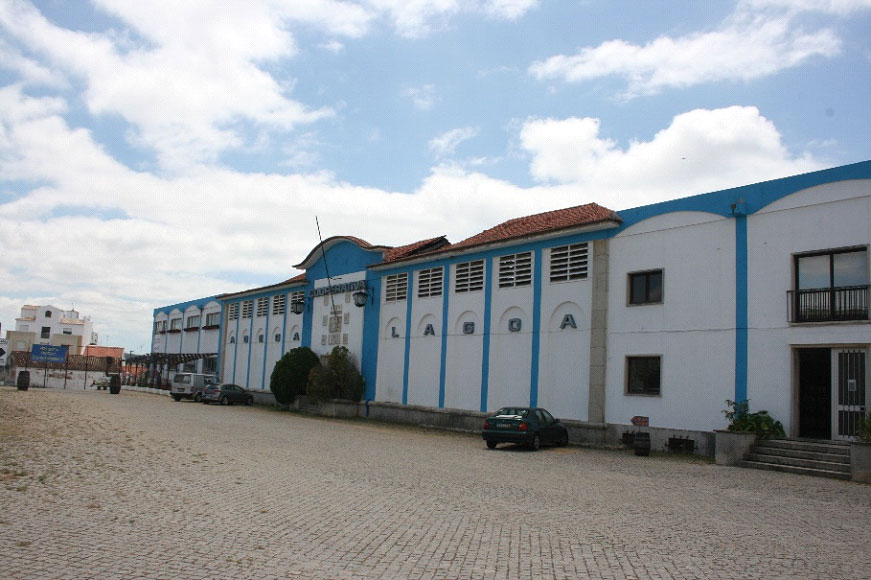
Arte Algarve (art in Algarve) is being developed into a multi-functional space, including a permanent home for art auctions (the first of which planned for July 19th 2014, where more than 170 works will be on sale), and will in the future include a shop for local arts and crafts and an area serving drinks and light snacks. It already houses a permanent Algarve art section, a rotating monthly exhibition and a cross-section of artists in its main gallery.
Artistic multiculturalism is evident in the works that grace the amazing space of the Arte Algarve (art in Algarve) building.
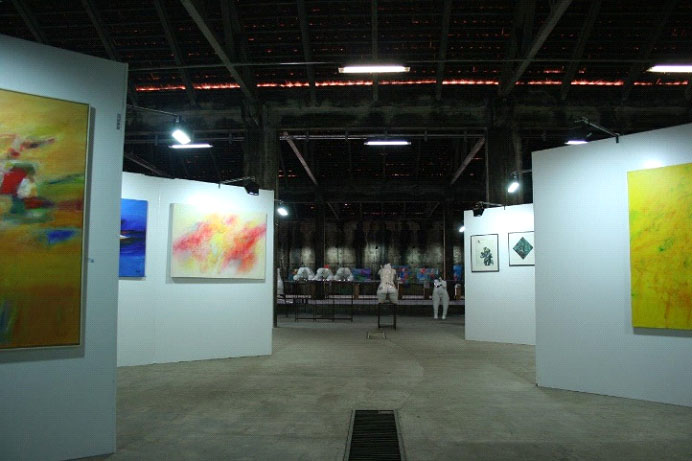
Immediately evident is a blend of an original, almost ethnic, vein, as expatriate artists remain true to their roots, yet create unexpected contrasts with moments of inspiration brought on, one would imagine, by the omnipresent light.
From humble beginnings at a local arts market, Rolf Osang understood that the combination of the region’s beauty, its demographics and the “extraordinary quality of its light”, represented an opportunity to incubate the region’s artistic talent.
Art in Algarve is ‘mature’ art, not only because many of its protagonists are seniors, but because the genre, themes, even the materials chosen are a reflection of a process of experimentation and maturation which sees each artist find the combination that is a perfect match to their taste, style and personality.
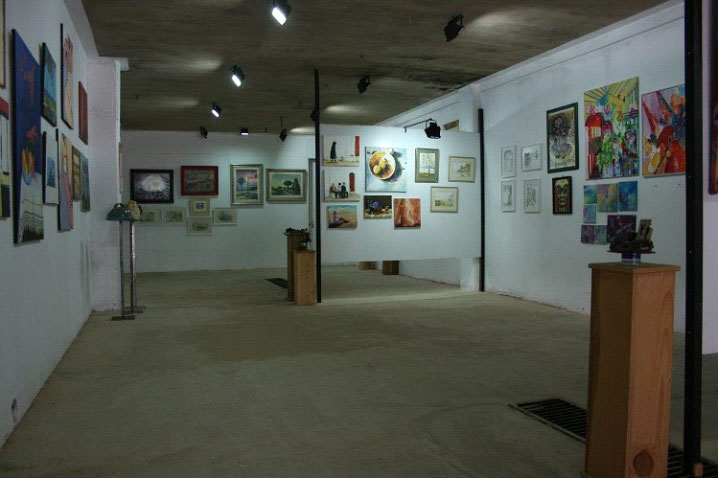
This recurring light motif (sic), present in so many of the works, where artists dare to be bold with colours and strokes, mirrors the physical structure itself, where the badly aligned roof tiles let in scintillating shafts of light while keeping the infrequent rain waters at bay. The combination of natural and artificial, direct and indirect lighting, sets the ambience which renders the massive space surprisingly intimate. The space itself is free of preconceptions and lends itself to the art connoisseur or the person with a love for beauty.
The variety of the work on display, which represents 70 artists in the main gallery alone and rotates every four months, means that a visitor can spend as little or as much time with each artist, choosing to simply gloss over those which are less to their liking. The way in which the gallery is organised, reminiscent of a traditional market where works by each artists are ‘clustered’ (without doubt influenced by Rolf Osang’s early experiences in the region), allows art lovers to find common themes, soothes the transitions between artists, and aids comparisons.

I reluctantly exited the main gallery, feeling guilty that I had not dedicated enough time or attention to any of the artists. I carried this feeling with me until I exited the building itself and looked back. There, I observed the unremarkable structure, a seemingly abandoned winery that had seen better days. My eyes could no longer see the drab outside that daily passers-by on the EN125 road observe, but instead the wonderfully reincarnated interior whose soul was an improved version of a former self. How interesting, I mused, that the senior artists whose works were brought to public attention in this once discarded space, had repaid the old dame with a new lease of life.
The Algarve: Best Place in the World to Retire!
by Luis Teixeira da SilvaThe Algarve: Best Place in the World to Retire!
Finally it is official!
It has been coming for some time, it must be said. Europe’s leading beach destination – World Travel Awards. 2nd best place to retire overseas – The Telegraph. 7thfriendliest nation in the world (among 140 surveyed) – CNN. World’s leading Golf Destination – WTA.
And now: Algarve, Portugal: Best Place in the World to Retire – 2014 Retire Overseas Index.
The index, which has just been published, sees the Algarve ranked ahead of 21 global locations including places such as Abruzzo in Italy, Barcelona in Spain, Istria in Croatia, Pau in France, Chaing Mai in Thailand, Istanbul in Turkey, Dumaguete in the Philippines, Ambergris Caye in Belize, Mendoza in Argentina, Puerto Vallarta in Mexico and City Beaches in Panama.
The ranking was compiled using 12 criteria including climate, cost of living, crime, English spoken, entertainment, environmental conditions, existing expat community, healthcare, infrastructure, real estate, residency options and taxes. Portugal scored top marks in several categories: it received an A for its sizeable 100,000 expat community which allowed new arrivals to integrate faster; an A for Environment, an A for Crime (I think that should be lack of Crime!); and A for infrastructure, recognition that EU money was actually spent on something tangible; an A for Residency and of course an A for climate – no surprise there!
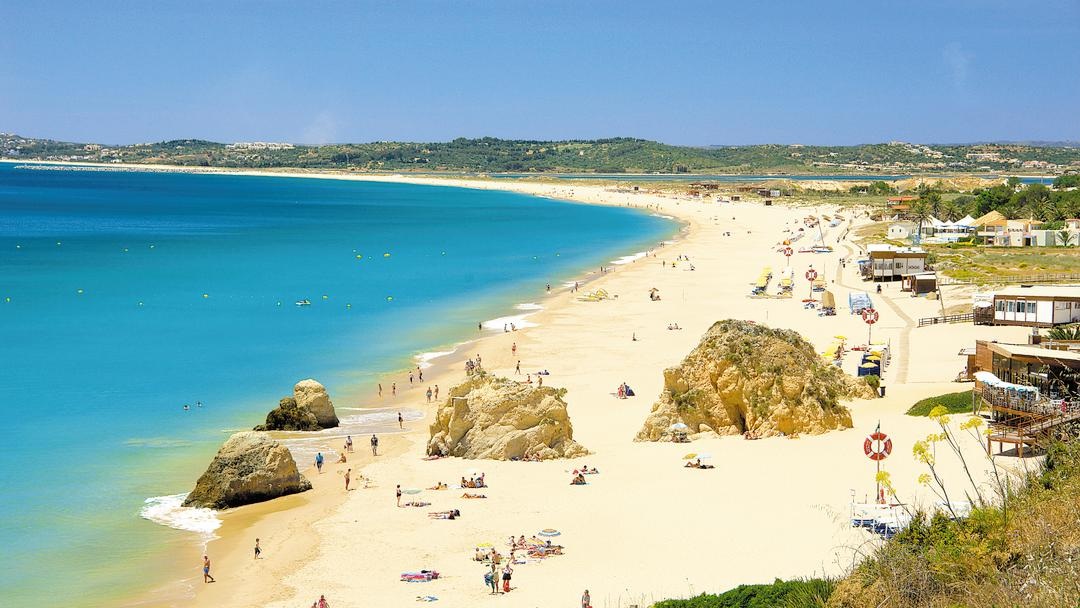
Surprisingly for many, but not us, it was awarded an A for Entertainment. This is not New York or London, but you can see a World Premiere of a musical – Blind Faith has its run of 8 performances in October before starting a 60 performance tour in the UK. It isn’t New Orleans or Paris, but you can enjoy jazz, fado, youth orchestras or ballet, most weeks of the year. It isn’t Flushing Meadow or Adelaide, but you can play a tennis tournament most weekends. Wentworth it ain’t but talk to any of the pros and they will tell you that among the 42 courses that grace the Algarve, there will be at least one that will match your favourite anywhere in the world. Plus you won’t have to travel more than an hour to reach any of them. And when it comes to traditional markets and an array of dining experiences, well, there is really no need to travel to Florence, Rio de Janeiro or even Spitalfields.
Health and Real Estate ranked as an A-. Taxes only ranked as a B because the Non Habitual Residency programme, which allows many new resident foreigners to earn pensions tax-free, only lasts 10 years for any qualifying individual. And the Algarve’s lone C was earned in the English Spoken category, not because few people speak English in the region but because Portuguese as a language is considered very difficult for a foreigner to learn.
Forbes, the highly respected and influential magazine, business and entrepreneurial group, was quick to publish news of the Algarve’s new-found status for retirees. The report, which can be found at www.forbes.com/sites/nextavenue/2014/08/25/the-7-best-places-to-retire-around-the-world/, incorporates the summary of the comprehensive study conducted by Live and Invest Overseas, the US-based publisher which spent months analysing data from different countries.
As Kathleen Peddicord, publisher of Live and Invest Overseas, states of the Algarve and Portugal in general, “it’s the most affordable option in Europe for retirees” – www.forbes.com/pictures/fgmi45jlfe/no-1-the-algarve-portugal. But as she points out, “retiring part-time overseas can also be a good idea”. The publisher frequently encourages those wishing to retire to a new location to do so for a trial period before making a final decision.
Service-based solutions such as those run by www.algarveseniorliving.com, are changing the landscape of the decision-making process of new and potential retirees, providing a way to experience the lifestyle and the region’s many advantages (and any challenges) prior to taking the plunge.
Luis da Silva, Founder and Managing Director at Algarve Senior Living, who has been actively involved as a local correspondent for publications such as the Overseas Retirement Letter, states “we are passionate about living in the Algarve and the many benefits and advantages of life in the region.” Algarve Senior Living assisted in researching and providing relevant data to support the Algarve’s status as an excellent retirement destination.
Algarve Senior Living is not only walking the walk, by launching the region’s first flexible solution for independent seniors. It is also talking the talk, by trumpeting positive data on Europe’s most famous secret, now also the best place in the world to retire. Hope to see you at an Algarve Senior Living village soon, where we walk the talk!
Another (boring?) weekend in paradise
by Luis Teixeira da SilvaWe hear it all the time. Went on holiday but there was nothing to do. Great beaches, plenty of sunshine, but how can we otherwise occupy our time? The other day, I even had to convince a Portuguese person that he was falling into the trap of paying lip service to that ill-gotten, and much maligned, it must be said, reputation which places like the Algarve have earned, for being, dare we say it: boring?
Our weekend started before we realised the week had ended. The first of the summer’s night tournaments was being held at the Portimão tennis club and we had one of the family members playing in the seniors event. The warm-up was interrupted by a phone call to attend a meeting and by the time I returned to offer my support, the match was well into the second set. Two and a half hours later, with plenty of bifanas and refreshments being liberally distributed among the attendees, singles and doubles matches were still in full flow. In this tournament there was even a celebrity attendee. Stefan Edberg, former world number 1 and a frequent visitor to the Algarve, brought his family along to watch his son play. The only give-away that they might not be local club members, was the group of blonde-haired supporters sitting on the long wooden benches alongside an otherwise dark-haired audience.
The first night was an early night, as players and supporters managed to get away by 01:30 and doubles was largely held over until the following evening. Nonetheless, the next morning I drive over to the same club because a younger family member is participating in an U/12 tournament. Hours and several victories later, and we are looking at another full day on the Sunday interrupted only by the continuation of the senior tournament in the evening.
Much to my disappointment I don’t make it over to the Arte Algarve gallery in Lagoa which holds its first auction. Around 80 people attend to see 170 works go under the hammer. Interest is good for this debut occasion and more than 20 works, including prints by well-known Portuguese artist Guimarães and famous Spanish painter Miró, are sold off to art lovers.
From there, it is only a short hop to the Feira do Doce Conventual, a traditional sweets fair held annually in the beautiful Convent of São José. The visitor is greeted by the gentle sounds of a saxophone and flute duo, soloists drawn from the local orchestra. As much a feast for the eye as for the taste buds, the event includes the Big 4 of endogenous ingredients: carob, orange, fig and almond. My comment to one exhibitor that the mere sight of such sweetness is enough to increase cholesterol levels is not appreciated by the person in question, but other visitors smile between mouthfuls of sweets. Outside, the traditional fado performers are getting ready to entertain the visitors, their haunting melodies soon floating into the balmy night air.
Sunday’s tennis more than eliminates any excess that might have resulted from the previous night. Players and families leave the club after the finals. Just enough time to wander down to the waterfront and treat everyone to an ice cream…just another weekend in paradise…
Algarve Set to Be the Next Big Thing
by Luis Teixeira da SilvaThe Next Big Thing
It’s all about retirement. Portugal and the Algarve have been through major infrastructural investment such as highways— the country has Europe’s fifth best roads—and airports— Faro has already receives over 5 million passengers a year, equivalent to half the country’s population. The Algarve is set to be the next big thing and already is a world-recognized tourist and golf destination… at last count there were 42 courses in less than 100 miles. Healthcare is good and some public hospitals have gained a reputation for excellence, as is the case of Faro Hospital and its cardiology unit. Investment in public facilities is visible in the modern sporting and pool complexes that exist in many towns.
Major recent changes have been made to the legal and tax framework. The government has made it possible to earn pensions tax-free and there’s no wealth or inheritance tax (more on this below in “Tax And Financial Matter”). The region is moving away from a physical infrastructure and facilities focus towards an ever-stronger services and lifestyle drive. The next big thing is a move to senior living communities, allowing residents to rent or buy, as well as a huge push towards positioning the country as Europe’s most attractive tax-free destination for retirees.
The Lay Of The Land
The Algarve (the next big thing), located at Europe’s westernmost tip, has an area of 4,996 square kilometers (1,930 square miles) and a resident population of 450,993 inhabitants. It has an average population density of roughly 90.3 inhabitants per square kilometer (or 233 inhabitants per square mile) and an entirely Atlantic coastline that measures about 160 kilometers (100 miles) in length.
Lagoa’s 23,000 inhabitants reside in an area of 88 square kilometers (34 square miles)—the second smallest municipality in the Algarve by area—with a population density of 261 people per square kilometer (or about 676 people per square mile). In contrast, Silves’ population density is 54 inhabitants per square kilometer (or 141 inhabitants per square mile), with its 37,000 inhabitants scattered over an area of 680 square kilometers (262 square miles)—the largest municipality by area.
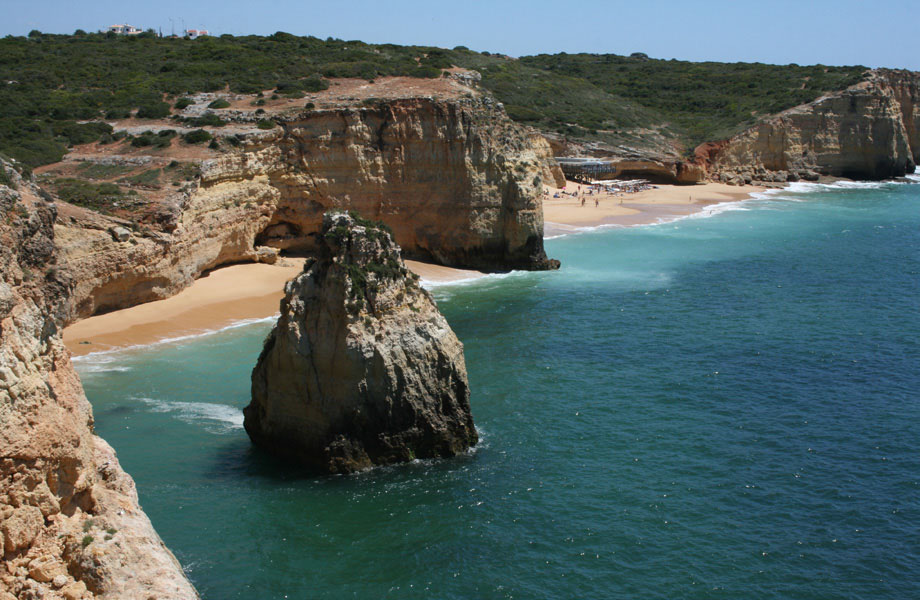
The region is geographically subdivided into three main areas, each of which contains some extraordinarily beautiful landscapes, and all of which are represented within the municipalities of Lagoa and Silves (* Source: www.visitalgarve.pt):
The coastal area is where most of the region’s economic activity is concentrated. In terms of landscape, the Algarve coast is very diversified, varying between an abrupt and jagged coastline and extensive sandy beaches, inlets formed by lagoons, marshland areas, and various formations of sand dunes. The coastal area has a low altitude and consists mainly of plains, divided into fields and meadows.
The “Barrocal” area marks the transition between the coast and the mountains, consisting of limestone and schist. This area is also known as the “beira-serra” (literally the mountain edge) and is where most of the agricultural produce of the Algarve originates.
The hills occupy 50% of the territory and are formed from schist and some granitic rocks.
A Long, Nautical History
Lagoa’s history is linked to the sea. Despite the capital city of the same name being inland, the fisherman’s villages of Carvoeiro and Ferragudo played an important part in the fishing and fish-preserves industries. The villages of Estômbar and Porches were important centers in the Islamic and medieval periods; Porches became the leading center for the design and manufacture of pottery and has become synonymous with the center of the modern pottery industry in the Algarve.
Modern Lagoa meshes well with its ancient history. Cobbled streets, whitewashed houses with lace-patterned chimneys, and an abundance of fig, olive, almond, and carob trees, are all vivid memories of important aspects of what made this area unique.
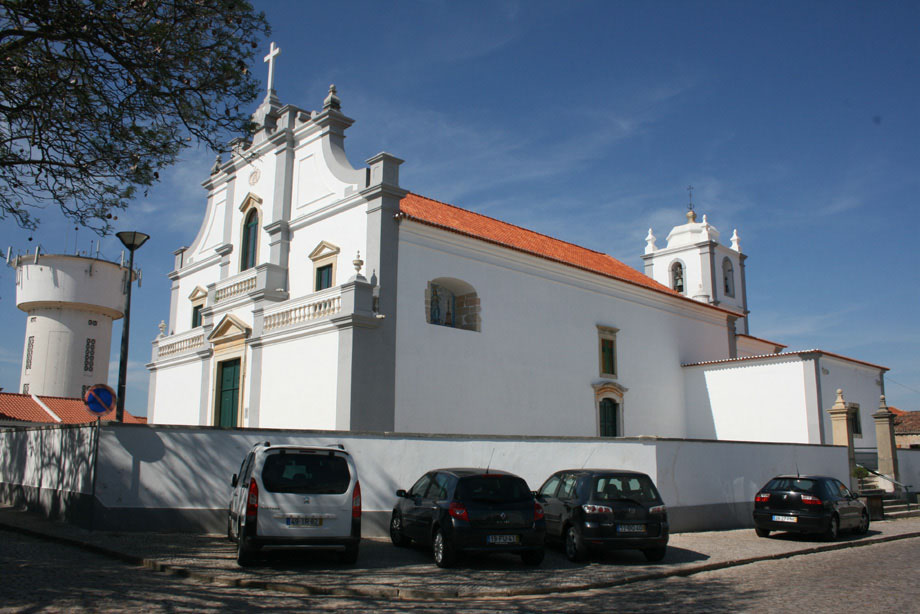
Silves is also a municipality steeped in history. The presence of man during the Paleolithic period is confirmed by one archaeological site. The municipality was inhabited during the Neolithic period and the Bronze and Iron Ages, a fact borne out by numerous archaeological finds. Impressive megalithic monuments—menhirs—carved out of the region’s red sandstone and limestone, are scattered across the municipality.
The Arade River was the route to the interior favored by the vessels of the Mediterranean peoples—Phoenicians, Greeks, and Carthaginians—who were drawn to the region by the copper and iron mined in the western Algarve. This much is evident from the archaeological site at Cerro da Rocha Branca—unfortunately destroyed—about half a mile away from Silves, which was inhabited from the end of The Bronze Age onwards. In the 4th century B.C., Silves boasted a strong defensive wall. In the ensuing centuries both the Romans and the Moors occupied it.
Silves owes its existence to the navigability of the Arade River and to its strategic position atop a hill that dominates a broad swathe of countryside. It was possibly founded during the period of Roman rule, but it was with the Moorish invasion that began around 714-716 that Silves became a prosperous city. By the 11th century, it was the capital of the Algarve and according to some authors surpassed Lisbon in size and importance. At this time Silves was also a center of culture, home to poets, chroniclers, and lawmakers.
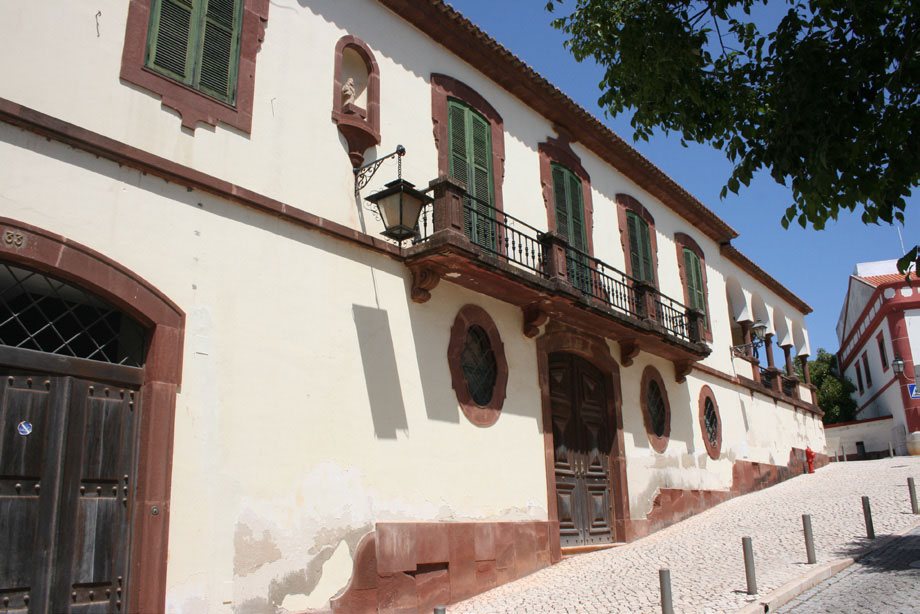
The religious and political tremors that rocked the Moslem world in the 11th and 12th centuries were felt in Silves too, where they manifested themselves in clashes between rival factions and frequent changes of ruler. King Sancho I took advantage of this internal division to lay siege to the city in 1189. His army was aided by crusaders from Northern Europe who were on their way to the Holy Land.
The fight for Silves was long and cruel and, according to chronicles of the time, many of its inhabitants perished, killed by hunger and thirst, or were slaughtered when the crusaders sacked the town. Portuguese rule was short-lived and in 1191 the city was recaptured by the Moors.
Despite having lost many of its inhabitants and much of its wealth, Silves was elevated to the status of Episcopal see and headquarters of the military government after the definitive conquest of the city in the context of the Christian occupation of the Algarve—1242 to 1249—which was concluded in the reign of King Afonso lll.
The centuries that followed were a difficult time for Silves. With the severance of its former links with North Africa and the gradual silting up of the river, it found itself side-lined from thelucrative maritime trade. Consequently, its economic, political, and military influence dwindled, while places like Lagos, Portimão, and Faro grew in importance. Natural catastrophes like the plague, earthquakes, and fevers caused by the swamp that formed where the Arade had once flowed also contributed to the town’s decline.
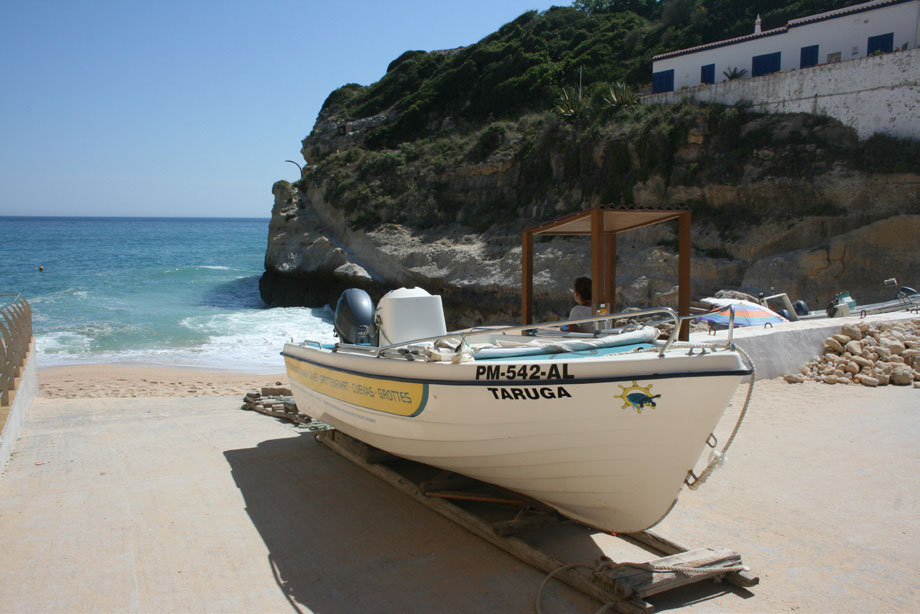
The coup de grace came after the Episcopal order in 1534 instructed the transfer of the Episcopal see to Faro. Silves was never to recover its past splendor and for almost three centuries it was a city inhabited by only a few remaining citizens.
In the second half of the 19th century dried fruit and, above all, cork breathed new life into the city, which became one of the main processing centers for those products. Today Silves has Europe’s only cork museum as testament to the importance of that product to its economy. It is orange farming that today makes Silves the most important citrus producing region in Portugal. Due to its central location, Silves also plays an important role in the national transport infrastructure, with Tunes the main rail entry and exit point from the Algarve province, and the A2 and A22 highways, the most important routes within and from the Algarve, passing through the municipality. (* Source: www.visitalgarve.pt).
Algarve – the next big thing in Europe.
Europe’s Best Kept Secret
by Luis Teixeira da SilvaEurope’s Best Kept Secret
Europe’s best kept secret. That’s how this part of the world is often described. Why? Because it has Europe’s best beaches, Europe’s best golf courses, one of Europe’s friendliest folk, it’s the chosen retirement destination for over 100,000 resident expatriates, and, added to all that, it’s Europe’s newest tax haven.
Several international publications have ranked Portugal as one of the best overseas retirement destinations, including the British broadsheet the Telegraph, which rated the country asthe “2nd best place to retire abroad.” A safe region, with very little crime and a laid-back lifestyle for expatriates, this destination caters equally to families and retirees, due to the wide variety of cultural, nature-based, sporting, gastronomic, and other activities. Long a popular summer destination for sunseekers and a winter-stay retreat for those getting away from Northern Europe’s colder months, the Algarve receives more than 5 million annual visitors through its airport alone, swelling the local population of approximately 350,000. Add to this the fact that it is the Portuguese people’s preferred holiday destination and that the Spanish love to visits its wilder western coast, and you begin to understand why, at peak times, several million more come here to experience its beauty.
Expect to enjoy the lifestyle if you holiday, study, or retire here, but count on some frustration if you move to the region to work. Business bureaucracy and the shrinking of the economy because of the financial crisis of 2008, mean that the region is not the obvious choice for those looking for employment. Entrepreneurs, on the other hand, will find that the region’s excellent communications infrastructure, pleasant working environment, and cheap and talented labor force, together with a range of EU and national incentives to encourage start-up activity, may well make this a preferred location for launching new business ideas.
If you are looking for a mix between the Algarve’s historical roots and the spectacular beaches for which it is famous, then look no further than Silves and Lagoa. These two municipalities, located slightly west of center in Portugal’s southernmost province, allow residents to experience the best the area has to offer.
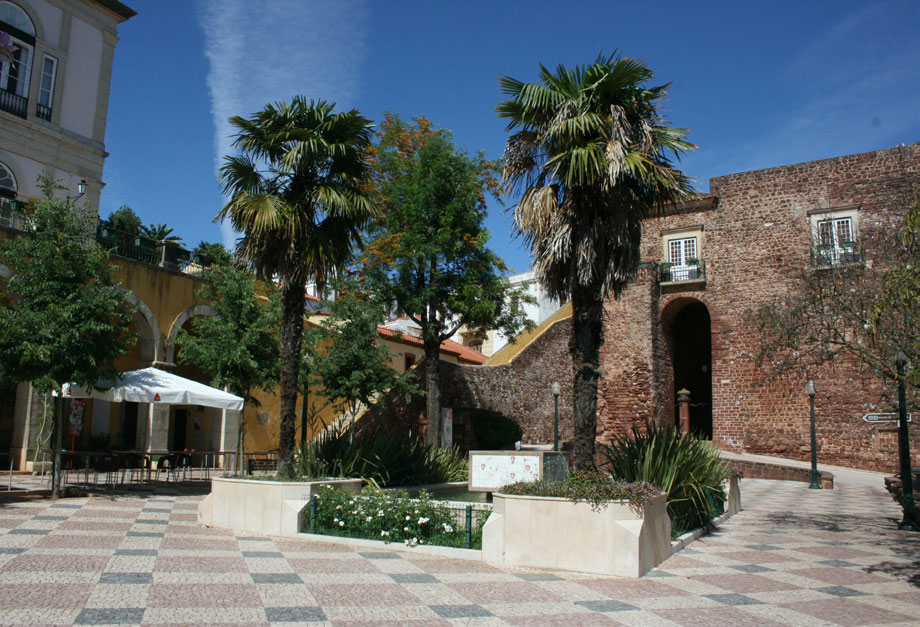
Silves, nestled in verdant valleys surrounded by the country’s largest citrus-growing area, and on the banks of the Arade River, which is navigable to where it meets the sea at Portimão, offers a warm microclimate, and visitors here will feel comfortable all year round…but perhaps just a little flustered when temperatures soar in the summer! Silves’ undulating hills are located inland in the region known as the barrocal (pronounced “buh-rroh-kaal”) and are covered with indigenous bush and scrubland interspersed with the triad of regional trees: olive, carob, and fig. The barrocal and its fauna contrasts sharply with the expanse of white sandy beach of its only coastal town, Armação de Pêra.
For a variety of beaches, hop over to neighboring Lagoa, with the capital town of the same name, which is a much smaller municipality located close to the ocean. Most of its activity is related to tourism around the coastal resorts towns of Carvoeiro (pronounced “kuhr-voo-ey-roo”) and Ferragudo. Here’s my video tour of the area including the main towns covered in this issue of the ORL.
With the Portuguese being the largest fish eaters per capita in Europe, finding fresh fish at one of the many daily markets is not difficult. Add to that a variety of fresh produce grown in the region and available in the local markets of both towns, and there is no excuse for unhealthy eating of any type! Wash your meal down with one of several local wines and you have the makings of a superb, yet healthy, gastronomic lifestyle.
Portugal has, according to a past Bloomberg report, the lowest cost of living in Western Europe. A variety of competing supermarkets in the Silves and Lagoa area make this area on average 30% cheaper than most European countries further north.
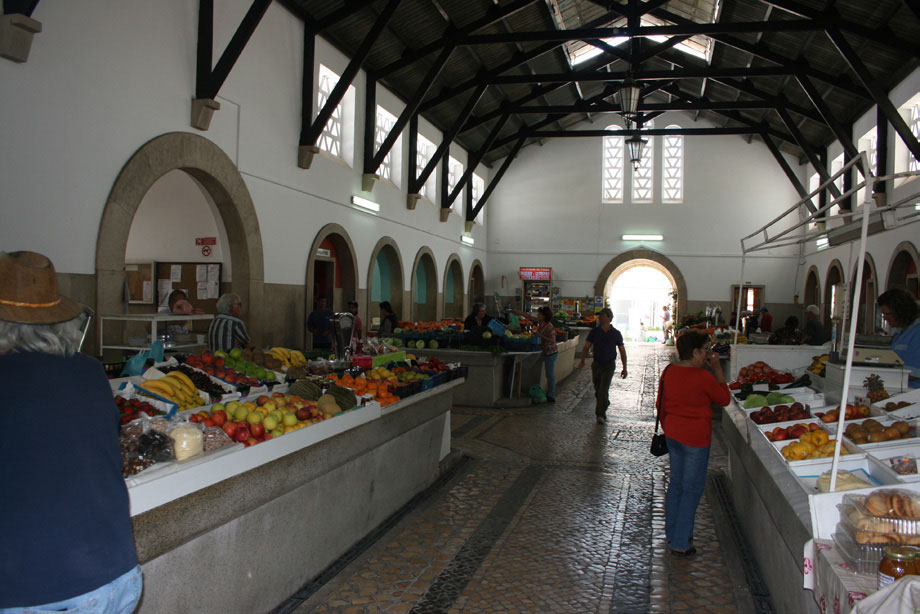
The Silves and Lagoa areas are positioning themselves as leaders in the retirement sector within the Algarve, Portugal, and Iberian Peninsula. Two of the region’s pioneering projects in senior living will be launched in these two municipalities— see “Making The Right Property Choice” for more information.
Add to these factors recent legislation that allows many foreign residents to receive pensions tax-free in the country, and you would be hard pressed to find many similarly attractive retirement destinations in the heart of Europe, because the Algarve is Europe’s best kept secret.
The Next Big Thing
by Luis Teixeira da SilvaThe Next Big Thing
It’s all about retirement. Portugal and the Algarve have been through major infrastructural investment such as highways— the country has Europe’s fifth best roads—and airports— Faro has already receives over 5 million passengers a year, equivalent to half the country’s population. The Algarve is set to be the next big thing and already is a world-recognized tourist and golf destination… at last count there were 42 courses in less than 100 miles. Healthcare is good and some public hospitals have gained a reputation for excellence, as is the case of Faro Hospital and its cardiology unit. Investment in public facilities is visible in the modern sporting and pool complexes that exist in many towns.
Major recent changes have been made to the legal and tax framework. The government has made it possible to earn pensions tax-free and there’s no wealth or inheritance tax (more on this below in “Tax And Financial Matter”). The region is moving away from a physical infrastructure and facilities focus towards an ever-stronger services and lifestyle drive. The next big thing is a move to senior living communities, allowing residents to rent or buy, as well as a huge push towards positioning the country as Europe’s most attractive tax-free destination for retirees.
The Lay Of The Land
The Algarve, located at Europe’s westernmost tip, has an area of 4,996 square kilometers (1,930 square miles) and a resident population of 450,993 inhabitants. It has an average population density of roughly 90.3 inhabitants per square kilometer (or 233 inhabitants per square mile) and an entirely Atlantic coastline that measures about 160 kilometers (100 miles) in length.
Lagoa’s 23,000 inhabitants reside in an area of 88 square kilometers (34 square miles)—the second smallest municipality in the Algarve by area—with a population density of 261 people per square kilometer (or about 676 people per square mile). In contrast, Silves’ population density is 54 inhabitants per square kilometer (or 141 inhabitants per square mile), with its 37,000 inhabitants scattered over an area of 680 square kilometers (262 square miles)—the largest municipality by area.

The region is geographically subdivided into three main areas, each of which contains some extraordinarily beautiful landscapes, and all of which are represented within the municipalities of Lagoa and Silves (* Source: www.visitalgarve.pt):
The coastal area is where most of the region’s economic activity is concentrated. In terms of landscape, the Algarve coast is very diversified, varying between an abrupt and jagged coastline and extensive sandy beaches, inlets formed by lagoons, marshland areas, and various formations of sand dunes. The coastal area has a low altitude and consists mainly of plains, divided into fields and meadows.
The “Barrocal” area marks the transition between the coast and the mountains, consisting of limestone and schist. This area is also known as the “beira-serra” (literally the mountain edge) and is where most of the agricultural produce of the Algarve originates.
The hills occupy 50% of the territory and are formed from schist and some granitic rocks.
A Long, Nautical History
Lagoa’s history is linked to the sea. Despite the capital city of the same name being inland, the fisherman’s villages of Carvoeiro and Ferragudo played an important part in the fishing and fish-preserves industries. The villages of Estômbar and Porches were important centers in the Islamic and medieval periods; Porches became the leading center for the design and manufacture of pottery and has become synonymous with the center of the modern pottery industry in the Algarve.
Modern Lagoa meshes well with its ancient history. Cobbled streets, whitewashed houses with lace-patterned chimneys, and an abundance of fig, olive, almond, and carob trees, are all vivid memories of important aspects of what made this area unique.

Silves is also a municipality steeped in history. The presence of man during the Paleolithic period is confirmed by one archaeological site. The municipality was inhabited during the Neolithic period and the Bronze and Iron Ages, a fact borne out by numerous archaeological finds. Impressive megalithic monuments—menhirs—carved out of the region’s red sandstone and limestone, are scattered across the municipality.
The Arade River was the route to the interior favored by the vessels of the Mediterranean peoples—Phoenicians, Greeks, and Carthaginians—who were drawn to the region by the copper and iron mined in the western Algarve. This much is evident from the archaeological site at Cerro da Rocha Branca—unfortunately destroyed—about half a mile away from Silves, which was inhabited from the end of The Bronze Age onwards. In the 4th century B.C., Silves boasted a strong defensive wall. In the ensuing centuries both the Romans and the Moors occupied it.
Silves owes its existence to the navigability of the Arade River and to its strategic position atop a hill that dominates a broad swathe of countryside. It was possibly founded during the period of Roman rule, but it was with the Moorish invasion that began around 714-716 that Silves became a prosperous city. By the 11th century, it was the capital of the Algarve and according to some authors surpassed Lisbon in size and importance. At this time Silves was also a center of culture, home to poets, chroniclers, and lawmakers.

The religious and political tremors that rocked the Moslem world in the 11th and 12th centuries were felt in Silves too, where they manifested themselves in clashes between rival factions and frequent changes of ruler. King Sancho I took advantage of this internal division to lay siege to the city in 1189. His army was aided by crusaders from Northern Europe who were on their way to the Holy Land.
The fight for Silves was long and cruel and, according to chronicles of the time, many of its inhabitants perished, killed by hunger and thirst, or were slaughtered when the crusaders sacked the town. Portuguese rule was short-lived and in 1191 the city was recaptured by the Moors.
Despite having lost many of its inhabitants and much of its wealth, Silves was elevated to the status of Episcopal see and headquarters of the military government after the definitive conquest of the city in the context of the Christian occupation of the Algarve—1242 to 1249—which was concluded in the reign of King Afonso lll.
The centuries that followed were a difficult time for Silves. With the severance of its former links with North Africa and the gradual silting up of the river, it found itself side-lined from thelucrative maritime trade. Consequently, its economic, political, and military influence dwindled, while places like Lagos, Portimão, and Faro grew in importance. Natural catastrophes like the plague, earthquakes, and fevers caused by the swamp that formed where the Arade had once flowed also contributed to the town’s decline.

The coup de grace came after the Episcopal order in 1534 instructed the transfer of the Episcopal see to Faro. Silves was never to recover its past splendor and for almost three centuries it was a city inhabited by only a few remaining citizens.
In the second half of the 19th century dried fruit and, above all, cork breathed new life into the city, which became one of the main processing centers for those products. Today Silves has Europe’s only cork museum as testament to the importance of that product to its economy. It is orange farming that today makes Silves the most important citrus producing region in Portugal. Due to its central location, Silves also plays an important role in the national transport infrastructure, with Tunes the main rail entry and exit point from the Algarve province, and the A2 and A22 highways, the most important routes within and from the Algarve, passing through the
municipality. (* Source: www.visitalgarve.pt).
